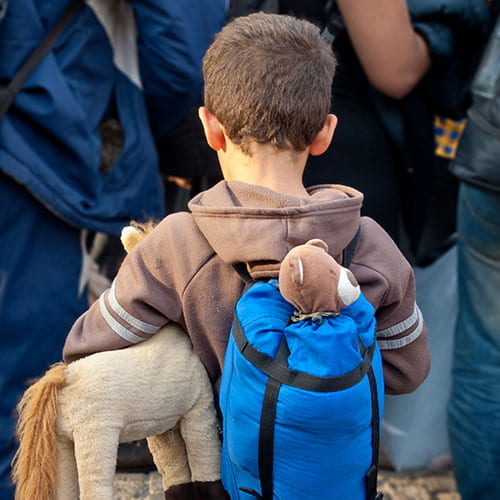Each year on June 20, World Refugee Day raises awareness of the plight of refugees and, as the UN writes, “recognizes their resilience in rebuilding their lives.”
The following recaps an October 2019 issue brief by Middle East fellow Kelsey Norman, who analyzes President Trump’s decision to downsize the U.S. resettlement program for refugees, essentially moving to end the largest resettlement program in the world.
The Trump’s administration’s actions are even more critical currently, as resettlement has been suspended globally since March 17 in response to the Covid-19 outbreak, causing some families to experience delays in the processing of their cases while others have been stranded in transit or separated from one another.
In fiscal year 2020 (which began on October 1, 2019), the Trump administration set the ceiling for refugee admissions to the United States at only 18,000 individuals. Compared to the program’s peak years (1990-1995) when an average of 116,000 refugees were accepted annually, this number is very low. Even in recent years, the program has accepted far higher numbers with 85,000 individuals resettled in 2016 and 53,000 in 2017.
To fully understand what this means, it is important to recognize just how lengthy and complex the process of refugee resettlement is. In order to qualify as a refugee, an individual must first be able to leave his or her country of origin and arrive in a second country. In the second country, the individual must locate an office for the United Nations High Commissioner for Refugees or appeal directly to the host country government and make an appointment for an interview where they will then explain their reasons for leaving their home country. In some countries, wait times for an interview can take years. At the interview, refugee status will be granted if the individual fled their home country due to persecution on the basis of race, religion, nationality, membership of a particular social group, or political opinion. Only then will the individual be eligible for resettlement to a third country.
If the individual is accepted for resettlement in the United States, he or she will go through several additional levels of intensive security screening, and the U.S. Citizenship and Immigration Services will make the final decision about whether or not the individual will be admitted.
Finally, once refugees accepted for resettlement arrive in the U.S., a resettlement agency will assist them in their first three months of residence. Refugees are expected to apply for mainstream social services and find employment following this initial period.
Trump’s administration has argued that its decision to cut refugee admissions was done in order to focus on the increasing number of asylum-seekers in the U.S. However, the system responsible for managing asylum cases is completely separate (bureaucratically and financially) from the refugee admissions system.
Another argument for downsizing the refugee resettlement program is cost. Why fund refugees to come to the U.S. when the U.S. can instead offer aid to other countries to host refugees there? However, it appears the Trump administration doesn’t want to commit to either option, as the 2020 budget also called for cuts to foreign humanitarian aid for refugees in global south countries.
Ideally, the United States needs to both maintain its resettlement program and continue to provide international support for other countries hosting refugees. The U.S. — the wealthiest nation in the world — should not shirk its responsibilities toward refugees by ending the world’s largest resettlement program.
Kelsey Norman, Ph.D., is the director of the Women’s Rights, Human Rights and Refugees Program and a fellow for the Middle East.
